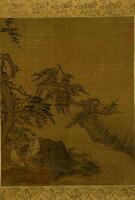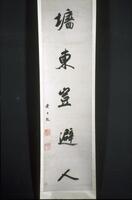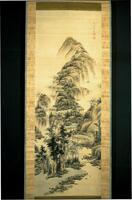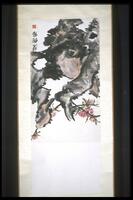412 UMMA Objects
412 UMMA Objects

Chinese (Chinese (culture or style))
Scholars under the Juniper Tree
15th century
Gift of William Muschenheim
1983/2.140

Japanese (Japanese (culture or style))
Bodhisattva Mañjusri (J. Monju Bosatsu), seated on a lion
15th century
Bequest of Margaret Watson Parker
1954/1.207

Ōhara Tonshū (Donshū)
Mountain Hut among Pines
1831 – 1844
Museum purchase made possible by a gift from Helmut Stern
1985/2.27

Yamaguchi Soken (Sojun)
Japanese Beauty in a Red Maple Leaf Robe
1800 – 1832
Museum purchase made possible by a gift from Helmut Stern
1985/2.7

Mori Tetsuzan (Tessan)
A Pair of Camels
1800 – 1849
Museum purchase made possible by the Margaret Watson Parker Art Collection Fund
1986/1.164

Ren Yu (Jen Yü)
God of Happiness and Attendant in the Clouds, in the style of Luo Ping
1886
Gift of Jung Ying Ts'ao, in honor of Senator Carl Levin
1987/1.276

Riqi Huang
Calligraphy (one of a pair)
1780 – 1920
Gift of Sarah and Otto Graf, supplemented by the Margaret Watson Parker Art Collection Fund
1980/2.201

Nakabayashi Chikutō
Mountain Landscape in Summer
1800 – 1849
Museum purchase made possible by the Margaret Watson Parker Art Collection Fund
1982/2.56
Loading…




